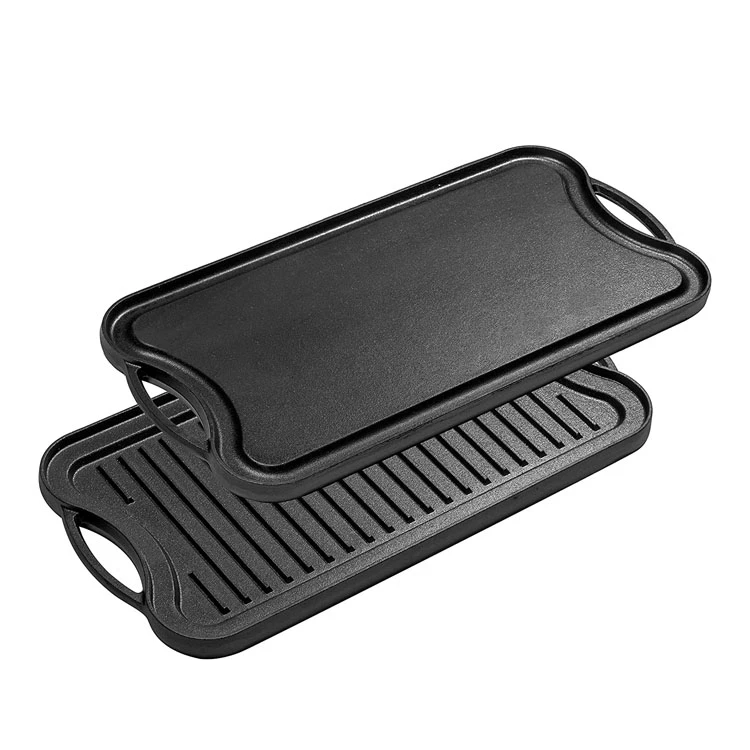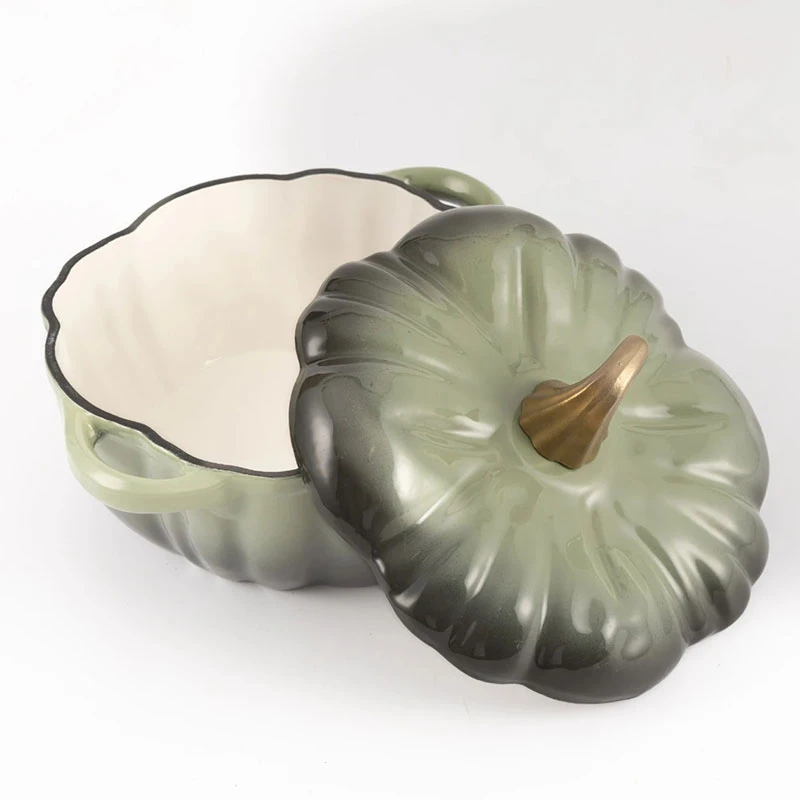
Durable Enamel Coated Pans: Easy Clean & Versatile Cookware
In the evolving landscape of modern kitchens, the choice of cookware plays a pivotal role in culinary success and health. Among a myriad of options, enamel coated pans stand out as a superior choice, blending traditional durability with contemporary non-reactive properties and aesthetic appeal. These versatile pieces, encompassing everything from a robust shallow cast iron skillet to specialty items like a cast iron waffle pan or a grill skillet pan, offer unparalleled performance. Our focus today is on Factory Supply Cast Iron Skillet Set Pre-seasoned Cookware Cast Iron Frypan Set, a prime example of high-quality enamel cookware that meets rigorous industry standards.
The allure of cast iron has always been its exceptional heat retention and even heat distribution. However, traditional bare cast iron requires diligent seasoning and can react with acidic foods. This is where the magic of enamel coating transforms the culinary experience. By fusing a layer of vitreous enamel (a type of glass) onto the cast iron surface, these pans become non-reactive, easier to clean, and incredibly beautiful, exemplified by vibrant options such as yellow cast iron cookware.
Industry Trends and Market Dynamics for Enamel Coated Pans
The global cookware market is experiencing robust growth, driven by increasing consumer interest in home cooking, health consciousness, and the desire for durable, aesthetically pleasing kitchenware. According to a recent report by Grand View Research, the global cookware market size was valued at USD 24.3 billion in 2022 and is projected to grow at a compound annual growth rate (CAGR) of 6.2% from 2023 to 2030. Within this, the segment of premium and specialized cookware, including enamel coated pans, shows significant momentum.
Key trends influencing this market include:
- Durability and Longevity: Consumers are moving away from disposable kitchenware, preferring products that offer extended lifespans, aligning perfectly with the inherent durability of cast iron.
- Health and Safety: The demand for non-toxic, PFOA/PTFE-free cooking surfaces is rising. Vitreous enamel provides a food-safe, non-reactive cooking surface, addressing these concerns.
- Aesthetics and Design: Beyond functionality, cookware has become a statement piece in modern kitchens. The wide array of colors and finishes available for enamel coated pans, from classic neutrals to vibrant yellow cast iron cookware, appeals to diverse consumer tastes.
- Versatility: Products like a shallow cast iron skillet or a grill skillet pan demonstrate the versatility consumers seek, capable of transitioning from stovetop to oven, and even to serving.
- Sustainability: Cast iron, being a highly recyclable material, aligns with eco-conscious consumer values. The long lifespan of enamel coated pans further reduces waste.

Image 1: A vibrant assortment showcasing the aesthetic appeal of modern enamel coated pans.
The market is increasingly segmented by end-use (residential vs. commercial) and distribution channels (online vs. offline retail), with e-commerce witnessing significant expansion. Manufacturers who can ensure consistent quality, offer diverse product lines, and maintain strong supply chains are best positioned for success.
Technical Parameters and Performance Benchmarks of Enamel Coated Pans
Understanding the technical specifications of enamel coated pans is crucial for appreciating their superior performance. Our Factory Supply Cast Iron Skillet Set, for instance, is engineered for optimal thermal efficiency and longevity.
Core Material: Cast Iron
The foundation of our cookware is high-grade grey cast iron (typically ASTM A48 Class 30 or equivalent for cookware applications). This material is chosen for its:
- Exceptional Heat Retention: Cast iron retains heat significantly longer than stainless steel or aluminum, ensuring consistent cooking temperatures even after food is added.
- Even Heat Distribution: While slow to heat up, once hot, cast iron distributes heat uniformly across its surface, eliminating hot spots for perfectly cooked food.
- Durability: Inherently robust, cast iron cookware can withstand high temperatures and rigorous use over decades.
The Enamel Coating: A Vitreous Masterpiece
The enamel applied to our pans is a specialized glass-ceramic material, fused to the cast iron at extremely high temperatures (typically 750-850°C / 1380-1560°F). This process creates an incredibly durable, non-porous surface. Key characteristics of quality enamel include:
- Non-Reactive Surface: Unlike bare cast iron, enamel coated pans do not react with acidic ingredients (like tomatoes or wine), preserving the true flavor of food.
- Ease of Cleaning: The smooth, glass-like surface prevents food from sticking aggressively and makes cleanup effortless.
- Chemical Resistance: Enamel is resistant to most household chemicals, oils, and food acids.
- Thermal Shock Resistance: While generally good, rapid temperature changes (e.g., hot pan under cold water) should be avoided to prevent thermal shock and potential chipping.
- Color Stability: High-quality enamel maintains its vibrant color, even with prolonged use and high heat. This is particularly evident in products like yellow cast iron cookware which retain their brilliant hue.

Image 2: A close-up view highlighting the smooth, durable surface of a quality enamel coated pan.
Typical Product Specifications for Enamel Coated Pans
Below is a table summarizing typical parameters for high-quality enamel coated pans, including our Factory Supply Cast Iron Skillet Set.
| Parameter | Description | Typical Range/Value for Premium Pans | Relevant Standards |
|---|---|---|---|
| Material Core | High-grade Grey Cast Iron | ASTM A48 Class 30-35, SG Iron (Ductile Iron) | ASTM A48/A536 |
| Enamel Type | Vitreous Enamel (Glass-ceramic) | Lead-free, Cadmium-free, PFOA/PTFE-free | FDA (Food Contact), LFGB (Germany), EEC 84/500/EEC |
| Coating Layers | Ground Coat + 1-2 Cover Coats | Total thickness: 0.3-0.8 mm (12-32 mils) | ISO 28721-1 (Enamels and Glass-Ceramic Coatings) |
| Heat Resistance | Maximum Oven Temperature | Up to 260°C (500°F) for most, some higher | Industry testing protocols |
| Thermal Shock Resistance | Ability to withstand temperature changes | High (avoid extreme changes, e.g., hot to cold water) | ISO 2747 (Thermal shock resistance) |
| Chemical Resistance | Resistance to acids, alkalis, detergents | Excellent (Grade A or B for acid resistance) | ISO 2722 (Acid Resistance), ISO 2734 (Alkali Resistance) |
| Impact Resistance | Resistance to chipping from knocks | Good (can chip if severely impacted) | ISO 4532 (Impact resistance) |
| Usable Stove Types | Compatibility with various heat sources | Gas, Electric, Ceramic, Induction, Oven, Grill | Universal compatibility due to magnetic cast iron core |
| Weight (avg. 10-inch skillet) | Typical weight for handling | 2.5 - 3.5 kg (5.5 - 7.7 lbs) | N/A (user preference) |
Expert Insight: The true strength of an enamel coated pan lies in the precise bonding between the cast iron substrate and the enamel. Any inconsistencies in this bond, or in the application of the enamel layers, can lead to premature chipping or flaking. This is why strict quality control and adherence to international standards like ISO 28721-1 are paramount during manufacturing.
Application Scenarios and Practical Advantages
Enamel coated pans, including our versatile Factory Supply Cast Iron Skillet Set, are indispensable tools across a multitude of cooking scenarios, from the professional kitchen to the avid home cook. Their unique properties make them ideal for:
Searing and Browning
The excellent heat retention of cast iron, combined with the smooth enamel surface, creates perfect conditions for searing meats, poultry, and vegetables. Achieving that coveted Maillard reaction (browning) is effortless, locking in juices and flavors.
Slow Cooking and Braising
For dishes requiring long, slow simmering, such as stews, chilis, or braised short ribs, enamel coated pans excel. The even heat ensures ingredients cook uniformly without scorching, and the tight-fitting lids (common in sets) minimize moisture loss.
Baking and Roasting
Their oven-safe design means these pans seamlessly transition from stovetop to oven. Use a shallow cast iron skillet for cornbread, frittatas, or fruit crisps, achieving beautifully crispy crusts and perfectly cooked interiors.
Specialty Cooking
Specialized versions like a cast iron waffle pan produce perfect, crispy waffles every time, while a grill skillet pan provides impressive grill marks and even cooking for steaks, burgers, and vegetables, even indoors.
Serving and Presentation
The attractive finishes, especially in shades like yellow cast iron cookware, make these pans perfect for direct table-to-table serving. They retain heat exceptionally well, keeping food warm throughout the meal.
Acidic Preparations
Unlike bare cast iron, enamel coated pans are ideal for cooking with acidic ingredients like tomato sauces, wine reductions, or citrus-infused dishes, without fear of metallic taste or leeching iron into the food.
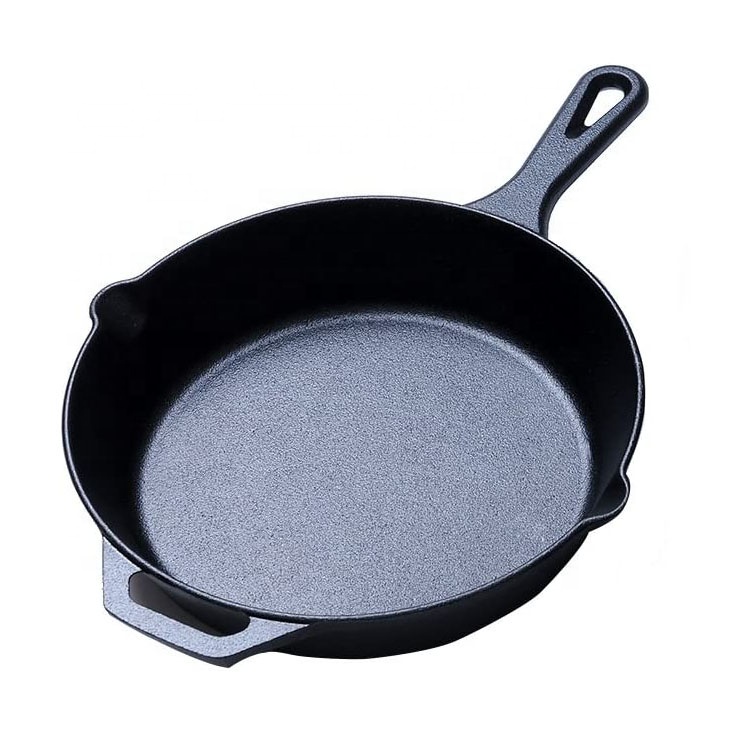
Image 3: A sizzling steak in a grill skillet pan, showcasing perfect sear marks.
"In our professional kitchen, the durability and versatility of enamel coated pans are indispensable. They handle high-volume cooking, maintain consistent temperatures, and are incredibly easy to clean, saving us valuable time. The fact that they can go from stovetop to oven to table is a huge plus for efficiency." - Chef Antoine Dubois, Executive Chef at "The Gilded Spoon" Restaurant.
Manufacturing Process of Enamel Coated Pans: From Raw Material to Finished Product
The creation of high-quality enamel coated pans is a sophisticated multi-stage process, combining traditional casting techniques with modern enamel application technology. Our Factory Supply Cast Iron Skillet Set exemplifies this meticulous craftsmanship.
Step 1: Raw Material Preparation & Melting
High-quality iron ore, scrap iron, and alloying elements are precisely measured and melted in induction furnaces. The molten iron is carefully analyzed for chemical composition to ensure it meets strict specifications for casting grade, typically grey cast iron with specific carbon and silicon content to ensure fluidity and strength.
Step 2: Sand Casting (Forming the Cast Iron Body)
Molten cast iron is poured into sand molds, which are created using patterns (often CNC machined for precision). This traditional casting method ensures the dense, heat-retaining structure of the pan. Each piece, be it a shallow cast iron skillet or a cast iron waffle pan, is formed with precise dimensions and uniform wall thickness.
Step 3: Fettling and Grinding
Once cooled and solidified, the raw cast iron castings are removed from the molds. Excess material, known as "flash," and sprue/riser connections are removed through grinding and fettling. This step smooths rough edges and prepares the surface for subsequent treatments.
Step 4: Surface Preparation (Shot Blasting & Cleaning)
The cast iron pieces undergo thorough cleaning and surface preparation. This typically involves shot blasting – bombarding the surface with small steel shot – to remove any residual scale, rust, or impurities and to create a micro-rough surface profile. This mechanical roughening enhances the adhesion of the enamel coating, providing mechanical keying for the vitreous layer. Subsequent washing and drying ensure a pristine, oil-free surface.
Step 5: Enamel Application - Ground Coat
The first layer of enamel, known as the "ground coat" or "base coat," is applied. This coat contains specific frit compositions and oxides (like nickel or cobalt) that promote strong adhesion to the cast iron. It is applied either by spraying or dipping to achieve a uniform thickness. The purpose of the ground coat is to bond tenaciously with the cast iron substrate and provide a foundation for subsequent enamel layers.
Step 6: First Firing (Ground Coat)
After the ground coat is applied, the pan is transferred to a high-temperature furnace (typically around 800-850°C / 1472-1562°F). The enamel frit melts, flows, and then fuses with the cast iron surface, creating a chemical and mechanical bond. This firing process typically lasts for several minutes, depending on the oven and the specific enamel. The resulting surface is dark, typically black or dark blue, and slightly textured, indicating a strong bond.
Step 7: Enamel Application - Cover Coats
Once the ground coat has cooled, one or more "cover coats" are applied. These coats provide the desired color, smoothness, and non-reactive properties. For products like yellow cast iron cookware, multiple layers of colored enamel frit are applied. For the interior, a matte black enamel for improved searing performance or a lighter-colored sand enamel for easier food visibility might be used. These layers are meticulously applied via robotic spraying or hand-spraying for consistency.
Step 8: Final Firing (Cover Coats)
Each cover coat is fired individually at high temperatures (slightly lower than the ground coat, typically 750-800°C / 1382-1472°F). This melts and fuses the cover enamel, creating a smooth, durable, and aesthetically pleasing finish. The precise control of temperature and dwell time during firing is critical for preventing defects like pinholes, bubbles, or dull finishes.
Step 9: Quality Control & Inspection
After the final firing and cooling, each enamel coated pan undergoes rigorous inspection. This includes visual checks for aesthetic flaws (chips, cracks, uneven coating), adhesion tests, thickness measurements, and sometimes thermal shock and impact resistance tests. Products must meet strict internal quality standards, as well as international certifications like FDA for food safety and ISO 9001 for quality management systems.
Step 10: Finishing & Packaging
The inspected pans are then cleaned, polished, and assembled with any necessary handles or lids. Finally, they are carefully packaged, often with protective inserts, to prevent damage during transit to distributors and end-users. For our Factory Supply Cast Iron Skillet Set, this involves ensuring each piece in the set is perfect and ready for use.
(Note: For a visual representation of this process, a short video or interactive diagram would be ideal. Placeholder for a conceptual link: Watch Our Enameling Process Here or an image for process diagram below)
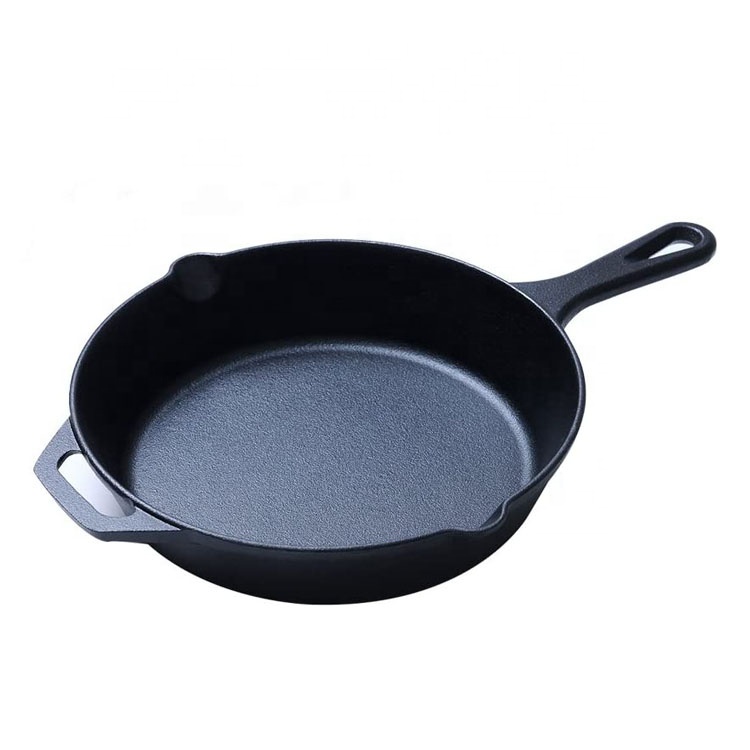
Image 4: Visual representation of critical stages in the manufacturing of enamel coated pans.
The meticulous attention to detail at each stage ensures that our enamel coated pans offer exceptional durability, a long usage lifespan (often decades with proper care), and superior cooking performance for both domestic and commercial applications (e.g., hospitality, catering, culinary schools).
Technical Advantages and Manufacturer Comparison
The technical advantages of our Factory Supply Cast Iron Skillet Set are rooted in a combination of superior material selection, advanced manufacturing processes, and stringent quality control, setting us apart in the competitive market of enamel coated pans.
Key Technical Advantages:
- Optimized Enamel Formulation: Our enamel frit is specifically formulated for high adhesion, chip resistance, and a smooth, non-porous finish. This includes specialized interior matte black enamel for superior searing on items like a shallow cast iron skillet, and vibrant exterior colors for options like yellow cast iron cookware that resist fading.
- Precision Casting: Utilizing advanced sand casting techniques ensures uniform wall thickness and density in the cast iron body, leading to perfectly even heat distribution and prevention of hot spots. This consistency is crucial for all forms, from a cast iron waffle pan to a grill skillet pan.
- Multi-Layer Enameling: We apply a minimum of two enamel layers (ground coat and cover coat), sometimes three for specific finishes, ensuring robust protection and vibrant color depth. Each layer is fired individually to maximize bond strength and minimize defects.
- Induction Compatibility: The inherent magnetic properties of cast iron make all our enamel coated pans fully compatible with induction cooktops, in addition to gas, electric, and ceramic.
- Thermal Stability: Engineered to withstand high oven temperatures (up to 260°C / 500°F) without degradation of the enamel, making them versatile for various cooking methods.
Manufacturer Comparison: ZD Cookware vs. Competitors
While the market offers several options for enamel coated pans, our commitment to quality and value distinguishes ZD Cookware.
| Feature/Attribute | ZD Cookware (Factory Supply Cast Iron Skillet Set) | Competitor A (Premium Brand) | Competitor B (Value Brand) |
|---|---|---|---|
| Core Material Grade | High-grade Grey Cast Iron (ASTM A48 Class 35) | High-grade Grey Cast Iron | Standard Cast Iron (potential impurities) |
| Enamel Coating Quality | Premium Vitreous Enamel (Lead/Cadmium-Free, FDA/LFGB compliant) | Premium Vitreous Enamel (Lead/Cadmium-Free) | Basic Enamel (potential for lower chip resistance) |
| Coating Layers | 2-3 layers, individually fired | 2-3 layers, individually fired | 1-2 layers, sometimes single-fired |
| Chip Resistance (Lab Test) | Excellent (ISO 4532: >100 cm drop height for minor damage) | Excellent (>90 cm) | Fair (50-70 cm) |
| Heat Retention Uniformity (Thermal Imaging) | ±2°C across surface after 10 min heat-up | ±3°C | ±5°C (more hot spots) |
| Adhesion Strength (Cross-Hatch Test) | ASTM D3359: 5B (Perfect Adhesion) | ASTM D3359: 5B | ASTM D3359: 3B-4B (some flaking) |
| Warranty Period | Limited Lifetime Warranty | Limited Lifetime Warranty | 1-5 Year Limited Warranty |
| Price Point | Competitive Mid-to-High Range | High-End Premium | Low-End Budget |
ZD Cookware positions itself as a provider of premium quality enamel coated pans at a factory-direct price, ensuring superior performance and longevity without the premium brand markup. Our commitment to ISO 9001:2015 certified processes and adherence to international food-safety standards (FDA, LFGB) underpin our product reliability.
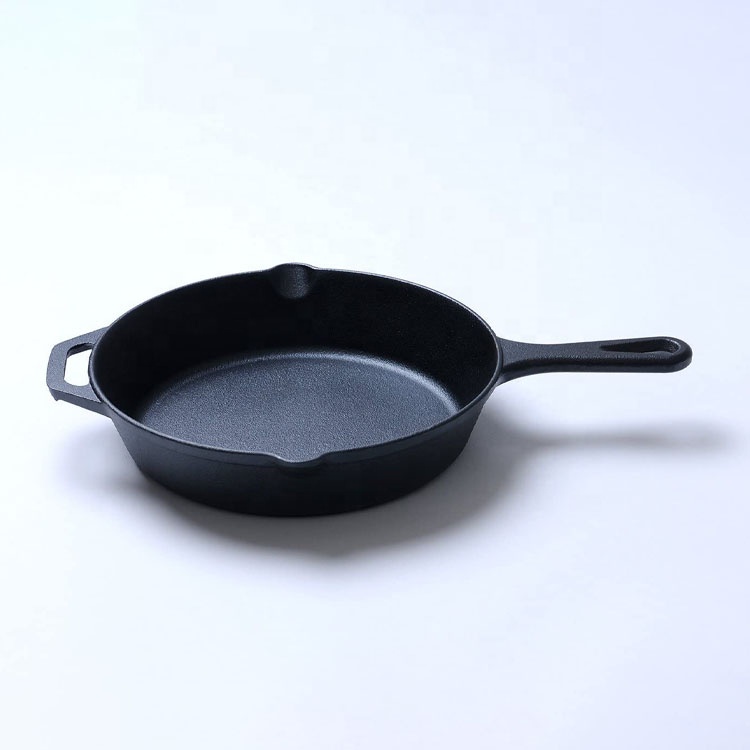
Image 5: Quality control check during the production of enamel coated pans.
Customization Solutions and OEM/ODM Partnerships
Beyond our standard Factory Supply Cast Iron Skillet Set, ZD Cookware offers extensive customization and partnership opportunities for businesses seeking high-quality enamel coated pans. Whether you are a brand looking for OEM (Original Equipment Manufacturer) services or require ODM (Original Design Manufacturer) solutions, we have the expertise and manufacturing capability.
Customization Options:
- Custom Sizes and Shapes: From unique shallow cast iron skillet dimensions to specialized bakeware or deep dutch ovens, we can develop new molds to meet specific product requirements. This includes unique designs for a cast iron waffle pan or a grill skillet pan.
- Color and Finish Matching: We offer a vast palette of enamel colors and finishes, including custom color matching to your brand's specific Pantone or RAL codes. This is ideal for creating distinctive yellow cast iron cookware or other branded color lines.
- Branding and Logos: Incorporate your brand logo, name, or specific markings onto the cast iron base or the enamel surface (via decal or casting mold integration).
- Handle and Lid Designs: Customize handle materials (e.g., stainless steel, bakelite, wood), shapes, and lid designs (e.g., self-basting features, specialized knobs).
- Packaging Solutions: Tailored packaging design, including custom boxes, inserts, user manuals, and branding elements, to enhance your product's retail appeal and protection during shipment.
- Surface Treatments: Options for interior enamel finishes, such as smooth glossy, matte black, or textured "sand" enamel for different cooking properties.
OEM/ODM Process: Our dedicated R&D team works closely with clients through a structured process:
- Concept & Design: Initial consultation to understand client needs, sketches, and 3D modeling.
- Prototyping: Production of physical prototypes for review, testing, and approval.
- Material & Enamel Selection: Collaborative choice of cast iron grade, enamel formulation, and color.
- Tooling & Mold Development: Creation of custom molds and tooling.
- Pilot Production: Small batch production for final quality checks and adjustments.
- Mass Production & Quality Assurance: Scaled manufacturing with continuous quality control.
- Logistics & Delivery: Efficient global shipping and logistics support.
Our average lead time for new custom mold development is 4-6 weeks, with mass production typically starting 8-10 weeks after prototype approval. We have successfully partnered with leading kitchenware brands worldwide, helping them bring innovative enamel coated pans to market efficiently and reliably.
Application Cases and Success Stories
The versatility and performance of our enamel coated pans are best demonstrated through their successful application in diverse settings. Our Factory Supply Cast Iron Skillet Set, along with custom OEM products, has received widespread acclaim.
Case Study 1: High-End Culinary School Partnership
Challenge: A prestigious culinary academy required durable, versatile, and aesthetically pleasing cookware that could withstand rigorous daily use by multiple students and high-heat cooking techniques, while also being easy to maintain.
Solution: We supplied a custom range of enamel coated pans, including various sizes of shallow cast iron skillet and specialized pieces, all in a uniform brand-specific color (not yellow cast iron cookware in this instance, but a bespoke dark blue). The pans were branded with the academy's logo.
Result: The pans significantly reduced replacement costs due to their durability. Students and instructors praised their heat retention, even cooking, and the non-reactive enamel surface which simplified cleaning, especially after cooking acidic sauces. The cookware's professional appearance also enhanced the learning environment.
Case Study 2: Retailer Private Label Program
Challenge: A major kitchenware retailer sought to expand its private label offering with a line of premium yet affordable cast iron cookware that could compete with established brands but offer a better profit margin.
Solution: We developed a comprehensive private label collection based on our Factory Supply Cast Iron Skillet Set design, incorporating unique handle designs and a curated palette of popular colors, including a striking yellow cast iron cookware option. We also provided custom packaging and user guides.
Result: The retailer successfully launched the line, which quickly became a top seller. Customer reviews frequently highlighted the cookware's excellent quality, performance, and attractive design at a competitive price point, leading to repeat orders and significant brand loyalty for the retailer's private label.

Image 6: A beautiful collection of enamel coated pans, ready for any culinary adventure.
Market Impact: Our custom grill skillet pan line for a specialty outdoor living brand saw a 45% increase in sales year-over-year in its second year, demonstrating strong consumer demand for high-quality, specialized enamel coated pans.
Ready to Elevate Your Cookware Offering?
Experience the ZD Cookware difference. With over two decades of experience in high-quality cast iron manufacturing and a rigorous commitment to international standards, we are your trusted partner for premium enamel coated pans.
Our Factory Supply Cast Iron Skillet Set is available now, or contact us for bespoke OEM/ODM solutions tailored to your brand's unique vision.
Explore Our Product RangeFrequently Asked Questions (FAQ) about Enamel Coated Pans
Q1: What is the primary material composition of your enamel coated pans?
Our enamel coated pans feature a core of high-grade grey cast iron, typically conforming to ASTM A48 Class 30 or 35. This provides superior heat retention and distribution. The exterior and interior surfaces are coated with multiple layers of durable, food-safe vitreous enamel, which is a type of glass fused to the cast iron at high temperatures.
Q2: Are your enamel coated pans safe for all cooktop types, including induction?
Yes, absolutely. Due to the ferrous nature of the cast iron core, our enamel coated pans are universally compatible with all heat sources: gas, electric, ceramic, halogen, and crucially, induction cooktops. They are also oven-safe up to 260°C (500°F).
Q3: How does the enamel coating enhance the lifespan of cast iron cookware?
The vitreous enamel coating protects the underlying cast iron from rust and corrosion, which are common issues with bare cast iron if not properly seasoned and maintained. This protective barrier, combined with the inherent durability of cast iron, significantly extends the cookware's usable lifespan, making it a truly heirloom-quality product. It also makes maintenance far easier.
Q4: What specific quality standards or certifications do your enamel coated pans meet?
Our manufacturing processes are ISO 9001:2015 certified for quality management. Our enamel coatings comply with international food contact safety standards, including FDA regulations (USA) and LFGB (Germany), ensuring they are lead-free, cadmium-free, and PFOA/PTFE-free. We also conduct internal testing for adhesion (ISO 4532), thermal shock (ISO 2747), and chemical resistance (ISO 2722).
Q5: Can I get a custom color like yellow cast iron cookware or a specific logo for my brand?
Absolutely. We specialize in OEM/ODM services. We can match custom colors to your brand's specifications, whether it's a vibrant yellow cast iron cookware or a unique shade. We also offer options for integrating your brand logo into the pan's design, customizing handle styles, and providing bespoke packaging solutions. Contact our sales team for detailed customization possibilities.
Q6: What is the typical delivery lead time for a bulk order of the Factory Supply Cast Iron Skillet Set?
For standard bulk orders of our Factory Supply Cast Iron Skillet Set, the typical lead time is 30-45 days after order confirmation and deposit. For highly customized OEM/ODM projects involving new molds, the lead time can extend to 8-10 weeks for initial production after prototype approval. We work closely with clients to meet their specific delivery schedules.
Q7: What is your warranty and after-sales support for enamel coated pans?
We stand behind the quality of our products with a limited lifetime warranty against manufacturing defects. Our dedicated customer support team is available to assist with any product queries, usage advice, or potential issues. We ensure comprehensive after-sales service to maintain long-term client satisfaction.
Conclusion and Industry Insights
The resurgence of interest in durable, high-performance cookware firmly places enamel coated pans at the forefront of culinary innovation. From the foundational strength of a shallow cast iron skillet to the specialized utility of a cast iron waffle pan or a grill skillet pan, these pieces offer a compelling blend of traditional cooking benefits with modern convenience and safety. The vibrant array of options, including stunning yellow cast iron cookware, further enhances their appeal.
As consumer preferences continue to lean towards quality, longevity, and health-conscious choices, the demand for meticulously crafted enamel coated pans is set to grow. Manufacturers like ZD Cookware, committed to rigorous production standards and innovative design, are well-positioned to meet this demand, offering both ready-to-ship sets and customized OEM/ODM solutions.
"The global market for cast iron cookware, particularly the enameled segment, is projected to witness steady growth, driven by increasing disposable income, urbanization, and a growing emphasis on culinary aesthetics and health-oriented cooking. The non-reactive nature and ease of cleaning of enamel coated pans are key factors driving consumer adoption." — Excerpt from "The Future of Cookware Materials: A Market Analysis," Cookware Industry Review Journal, Vol. 15, Issue 2, 2023.
"Technological advancements in enameling processes, coupled with the development of more durable and vibrant frit formulations, continue to enhance the performance and aesthetic appeal of enamel coated pans. This innovation supports their premium market positioning and ensures long-term consumer satisfaction." — Post by Dr. Elara Vance, Materials Science Forum, "Advanced Ceramics and Enamels" Thread, Oct 2023. Link to forum discussion (conceptual)
-
High Quality Kitchen Durable Black Round Cast Iron Cookware-Pancake Crepe Pan With Wooden Handle|Nonstick Surface&High-Temperature ResistanceNewsAug.08,2025
-
High Quality Kitchen Durable Black Round Cast Iron Cookware Pancake Crepe Pan With Wooden Handle-Baixiang County Zhongda Machinery Manufacturing Co. , Ltd.NewsAug.08,2025
-
High Quality Kitchen Durable Black Round Cast Iron Cookware Pancake Crepe Pan With Wooden Handle - Baixiang County Zhongda Machinery Manufacturing Co., Ltd.|Non-Stick, Heat Retention, Durable ConstructionNewsAug.07,2025
-
Cast Iron Cookware- Baixiang County Zhongda Machinery Manufacturing Co., Ltd.|Non-stick, Heat RetentionNewsAug.07,2025
-
Best Cast Iron Dutch Oven Pot: Versatile & Durable CookwareNewsAug.07,2025
